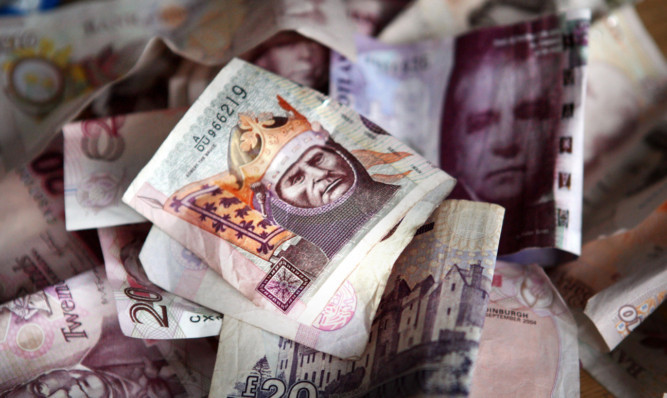Paying for future welfare benefits could be “somewhat more burdensome for an independent Scotland” than the rest of the UK, a report has claimed.
This is because the ageing population could “add a bit more to the costs of Scotland’s benefits bill than it does to that of Great Britain as a whole”, the Institute for Fiscal Studies (IFS) said.
It could make major reforms of the benefits system “more difficult” in Scotland if they are costly to implement and could leave large numbers of people worse off, according to the think tank.
“This means that funding the benefits system in the decades ahead may prove somewhat more burdensome for an independent Scotland,” the IFS said in a report on UK benefits spending.
“It will also make undertaking major reforms of the benefits system perhaps even more difficult for Scotland than for the UK as a whole, as such reforms are either costly or create many losers.”
Welfare spending in Scotland in 2011-12 amounts to about £17.2 billion, meaning the country received 8.8% of all benefit spending in Great Britain, against a population share of 8.6%.
Benefit spending per person is estimated to have been £3,238 which is 2% higher that the average across Britain, but still less than the amount spent per person on welfare in Wales, the North East of England, the North West of England and the West Midlands.
The SNP pledges to scrap the changes to housing benefit dubbed the bedroom tax if Scotland becomes independent, and Finance Secretary John Swinney promises a “triple lock” for senior citizens if there is a Yes vote in the referendum, which would see state pensions increased each year by whichever is higher from earnings growth, inflation or 2.5%.
The IFS said it “seems likely that this slightly more generous system could not be sustained in the long term without discretionary tax rises or further cuts to spending on public services”.
Undoing the changes to housing benefit could cost Scotland £50 million a year, with the IFS saying that the “triple lock” proposal is “potentially a much costly policy” in the long term.
While the IFS said independence “would give Scotland the opportunity to consider much more radical reforms than ‘fixing’ parts of the current system that look ill-conceived”, it said: “Major reforms to the system would likely either cost substantial sums of money or create large numbers of losers, many of whom are likely to have low incomes.”
The population of Scotland, where the proportion of older people is higher than the UK as a whole, is forecast to grow further, so is likely to have an impact, according to the report.
In 2011, 19.8% of the population of Scotland was above the state pension age, compared with 19.5% for the UK as a whole. By 2051 it is forecast that 22.6% of people in Scotland will be in this age group, compared with 21% across Britain.
“In the longer term, Scotland’s projected more rapid ageing is likely to push up benefit spending more quickly than in the rest of the UK, putting Scotland’s public finances under substantial pressure.” the IFS said.
“As with much else, independence offers Scotland an opportunity to set its own course on benefits policy but also the risk that its ambitions cannot be fulfilled as demographic pressures bite.”
